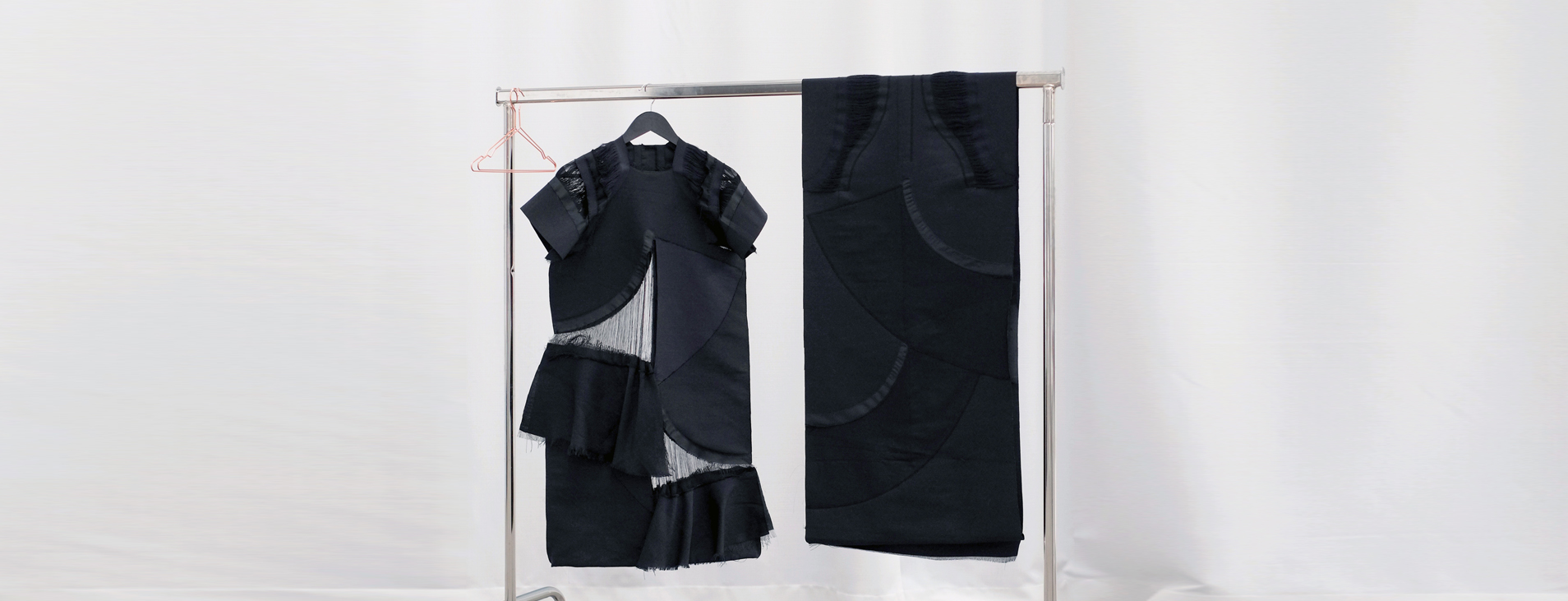
The project
The first 3-D designed Zero Waste Whole Garment collection.
THE CHALLENGE
Starting with the need to develop new technologies for textile and garment production for which the concept of waste becomes redundant, the textile industry needs to re-think its manufacturing workflow to be more sustainable and competitive.
THE SOLUTION
The innovation in the H|H Zero Waste Manufacturing System lies in the integration of two different textile technologies (customised spinning production and zero waste weaving technology) into one zero waste whole garment production process. This project aims at changing existing textile production infrastructures through a completely new design workflow.
HILO controls on-demand yarn quantity and qualities, McQuillan designs zero-waste garments directly off the loom. Both technologies address many of the problems of garment production and have the potential to provide new workflows for local micro-factories. The idea is to use software to translate digital patterns into different yarn thicknesses varying from very light to heavy.
Storytelling
THE IDEA:
Taking Studio Hilo’s innovative software and hardware system, and combining it with Holly McQuillan’s innovative research in whole garment weaving – The H||H collaboration explores the potential of developing new systems for woven textile-based form by building form from the fibre level up. Garments made this way are woven formed on the loom, using studio Hilo spin yarn that is engineered specifically for the functional and aesthetic requirements of the design. Once woven they only require cutting and a small amount of stitching – if any at all – for the exciting 3D form to be realised. This approach can revolutionise how we make 3D woven textile-based form, eliminating much of the manual labour currently required and enabling production to be localised to Europe.
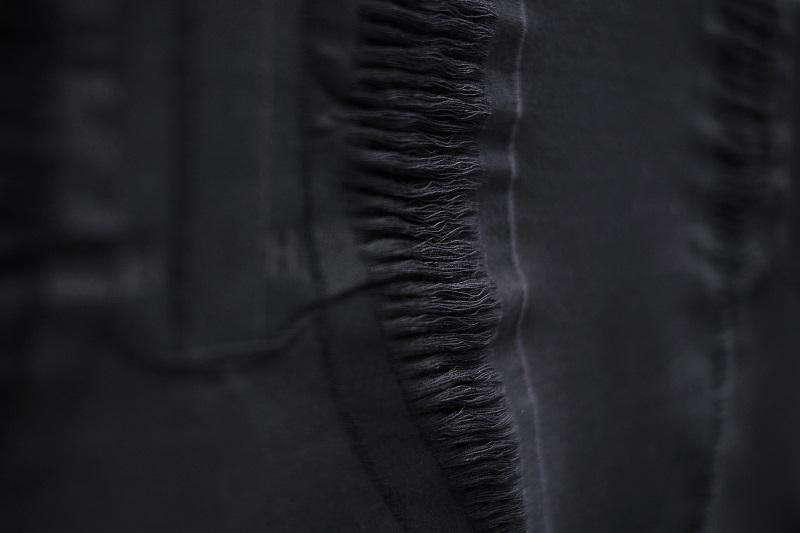
THE BIRTH OF THE PROJECT:
Coming from her background as a zero waste designer, Holly’s research exploring whole garment weaving enables dynamic and changeable zero waste 3D form to be embedded into the weave structures themselves. However, she found that the unfolding of form when constructed this way resulted in variable or “fractional” density caused by the distribution of yarn over multiple layers. Sometimes this density difference was desired, but not always – so she was looking for a way to control the effect. Studio Hilo had been developing their yarn spinning machine and software which enables the on-demand spinning of yarn, based on greyscale images, to determine the thickness of the yarn over its length. When Holly discovered the innovative work that Studio Hilo was doing she saw the potential for it to solve her fractional density problem.

THE CREATIVE PROCESS:
We began by testing the Hilo yarn in an industrial jacquard loom at the Swedish School of Textiles – we needed to be sure that the variable Hilo yarn would be able to withstand the high tension and speed of industrial jacquard weaving. And it can! Next, we explored how to control the placement of the yarn as it weaves so it can strategically place the thicker and thinner sections of yarn in the areas we needed it to be. Then, as we all know, Coronavirus made collaborative research life much more difficult for everyone. Still, there was much we could continue to do. in Sweden, Holly developed the dress design to a high degree of resolution by utilising digital 3D tools such as CLO and what small scale sampling she could do at the Swedish School of Textiles. Meanwhile, in Berlin, Sara was developing a new version of the Hilo machine that could more easily spin at the speed, with a higher degree of precision, required for this work. We hoped, like everyone, that we would soon be able to work together to bring these two components into one outcome.Sara sent the new machine to Holly in Boras – Sara led had a series of webinars to help Holly build her own Hilo Machine in her studio. We hoped that with the new loom coming for the SST, Holly would be able to weave the dress using Hilo yarn – however, corona delayed the looms installation so we looked for other solutions. We still needed to test the yarn in the context of the complex woven structures Holly uses, so Sara used the TC2 loom in Berlin to sample parts of the dress design using her yarn. This enabled us to test the 3D woven form to yarn workflow and outcome. But we still needed to be able to weave a full-sized version of the dress. Located in the Netherlands, EE Exclusives are a decades-old family-run weaving mill with experiences weaving Holly’s complex 3D woven garments, and they agreed to weave a full-size sample of the H||H dress. Working remotely with EE Exclusives weave designer, Milou Voorwinden, we translated the files designed for the loom in Sweden for the looms in the Netherlands. Using wool yarn to mimic the wool Hilo use, Milou sampled the complex structures and over whatsapp Holly and Milou solved any issues that came up until at last, we could weave the final, full-size 3D woven sample. EE Exclusives sent Holly the woven panels that have the textile-dress embedded in them, and then the process of forming could begin. Three dresses are woven across the full width of the loom. So Holly began by separating the textile into the three panels that make three dresses. Then the layers areseparated from each other at the sleeve and the flounce. The sleeve expands out from the shoulder and the flounce drops down, revealing the yarns that hold the structure together. The two straight side seams are sewn and then our model Sasha can put it on.

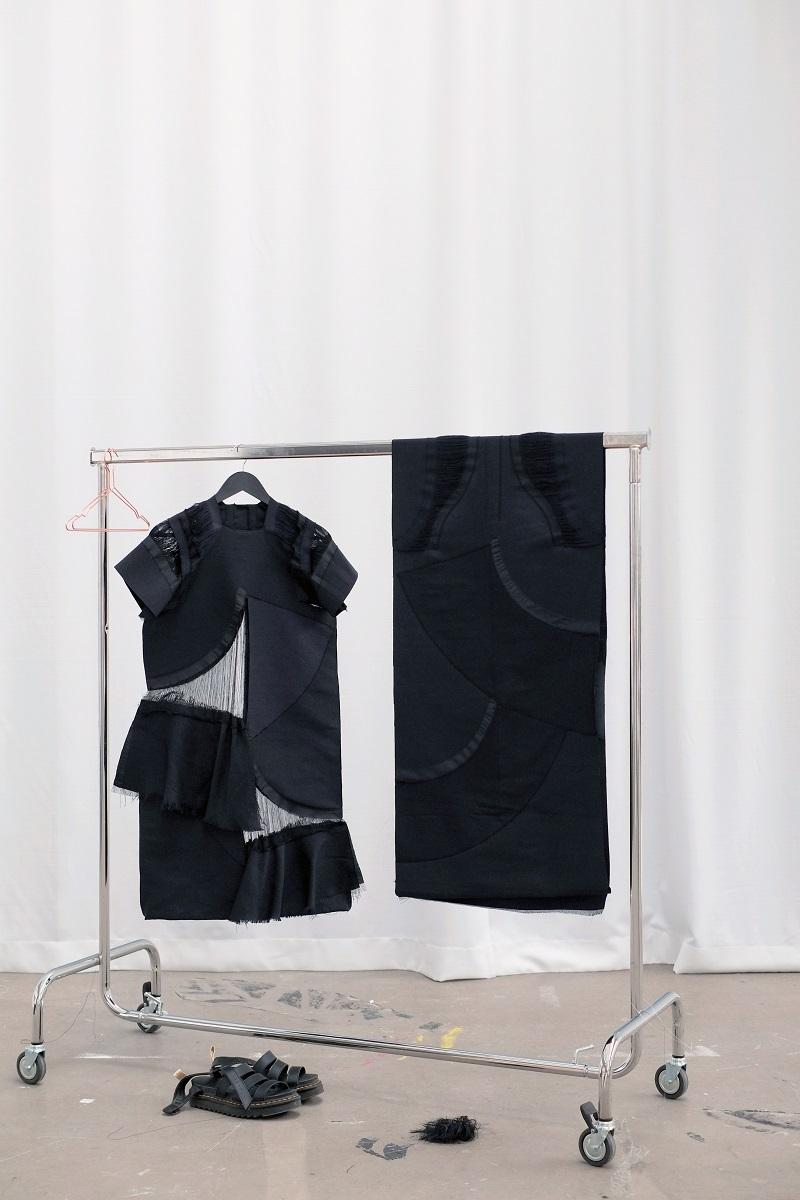
THE COLLABORATION:
The collaboration had many different shapes and connections – between Studio Hilo and Holly, between us and the weaving mill, and with our mentor/coach. The benefits of collaboration between Studio and Holly Mcquillan have been that we each bring different strengths and knowledge to the project and together we could build on the space between. Without us seeing the value in combining our respective knowledge in spinning and whole garment weaving, this project would never have got off the ground. This was the whole point of the project, and really the whole point of Worth. Our collaboration with the weaving mill meant that despite the covid pandemic we could still develop full-scale prototypes and test the complex bindings we planned to use with the Hilo Yarn. They were always engaged with the project, and we hope learned a lot from the process also. Through the worth project, we had such great support from our coach – not only in a research and development context but also from business perspectives. Our coach had just the right type of knowledge in the space of textile innovation and was able to help us understand the value of our project wasn’t in the physical product for sale, but the knowledge we hold in the innovative process. This insight has enabled us to develop our collaboration through Critical Textile Topologies – a collective we founded of likeminded design researchers – so we can market our collective knowledge to transform the industry.

THE FUTURE:
The H||H dress is proof of concept of our process and workflow. This design and manufacturing approach can revolutionise how we make 3D woven textile-based form, eliminating much of the manual labour currently required and enabling zero waste production to be localised to Europe. In founding Critical Textile Topologies we have the knowledge to combine all the steps from fibre to spinning, weaving, forming and beyond for the development of circular approaches to transform the industry. We hope that together we can provide to companies wanting to work in innovative spaces in the fashion and textile industries with a talented pool of researchers and designers to draw from. We have adeep understanding of both the industry – at all stages of the supply chain, and the understanding of the kind of deep research, innovation and creativity are needed to visualise and help companies manifest the kinds of futures they want, and we all need.
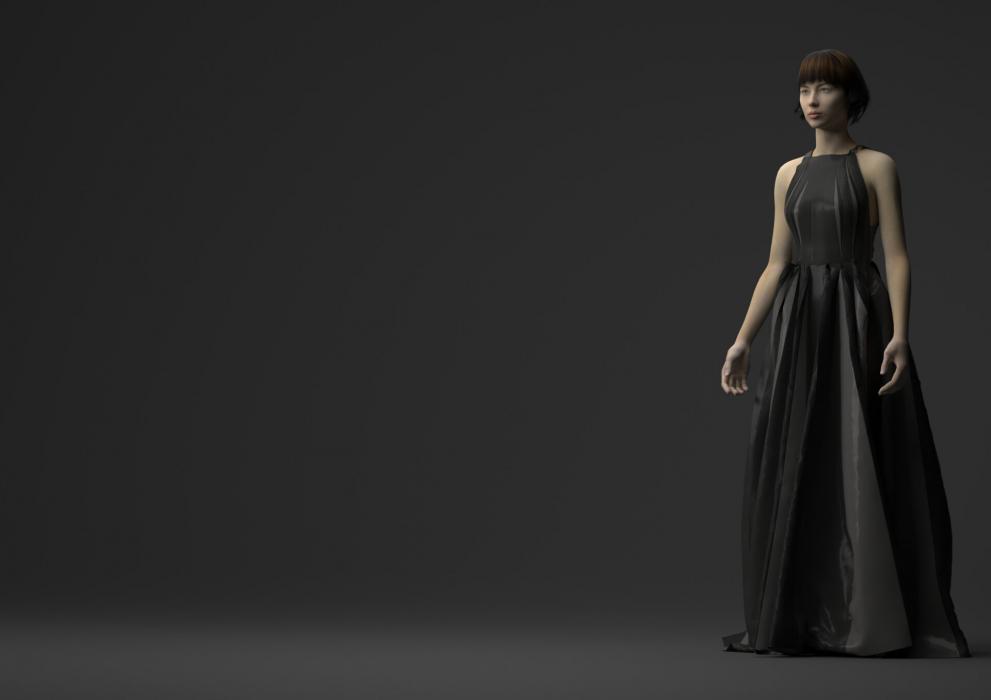
THE MESSAGE:
We need to work together to find ways of seeing what is already there, or undiscovered space, to transform the fashion and textile industries.
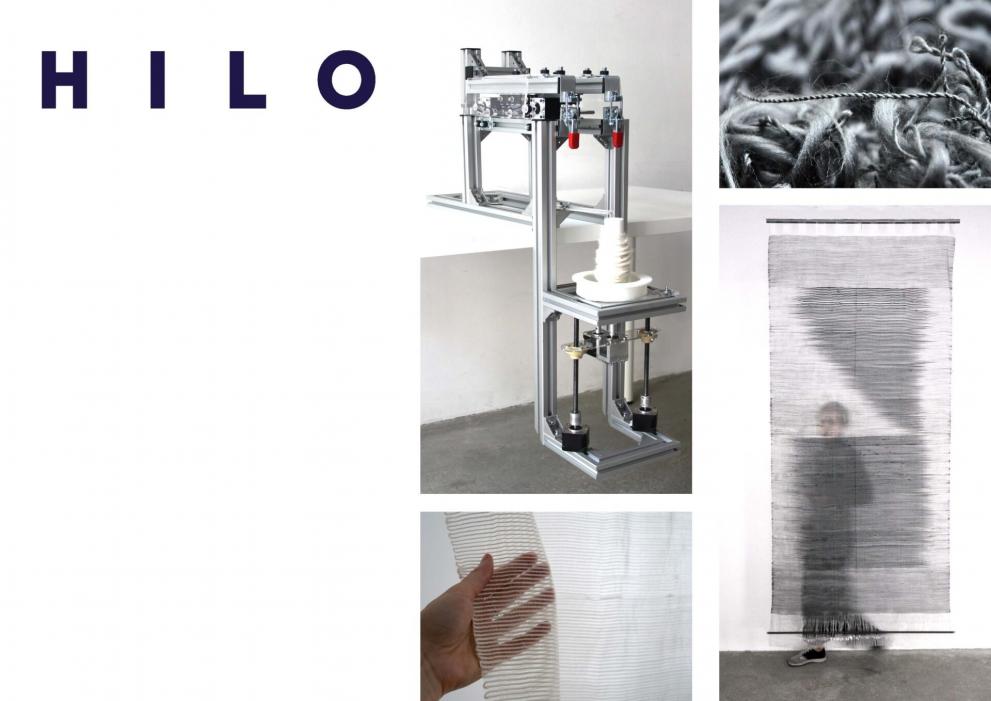
- Project locations
- GermanySweden
- Project website
- criticaltextiletopologies.com
- Projects Edition
- WORTH Partnership Projects I
- Project Call
- 3rd Call Projects
- Project Sector
- Textile and clothing
- Project Challenge
- High-performance materials
Contact
STUDIO HILO
Established in 2018, Studio HILO has been developing diverse open-source prototypes for digital spinning systems. Their software and hardware allow professionals to adapt industrial yarn productions to their needs, making production more local and flexible.
- Name
- STUDIO HILO
- Postal address
Germany
- Social media
